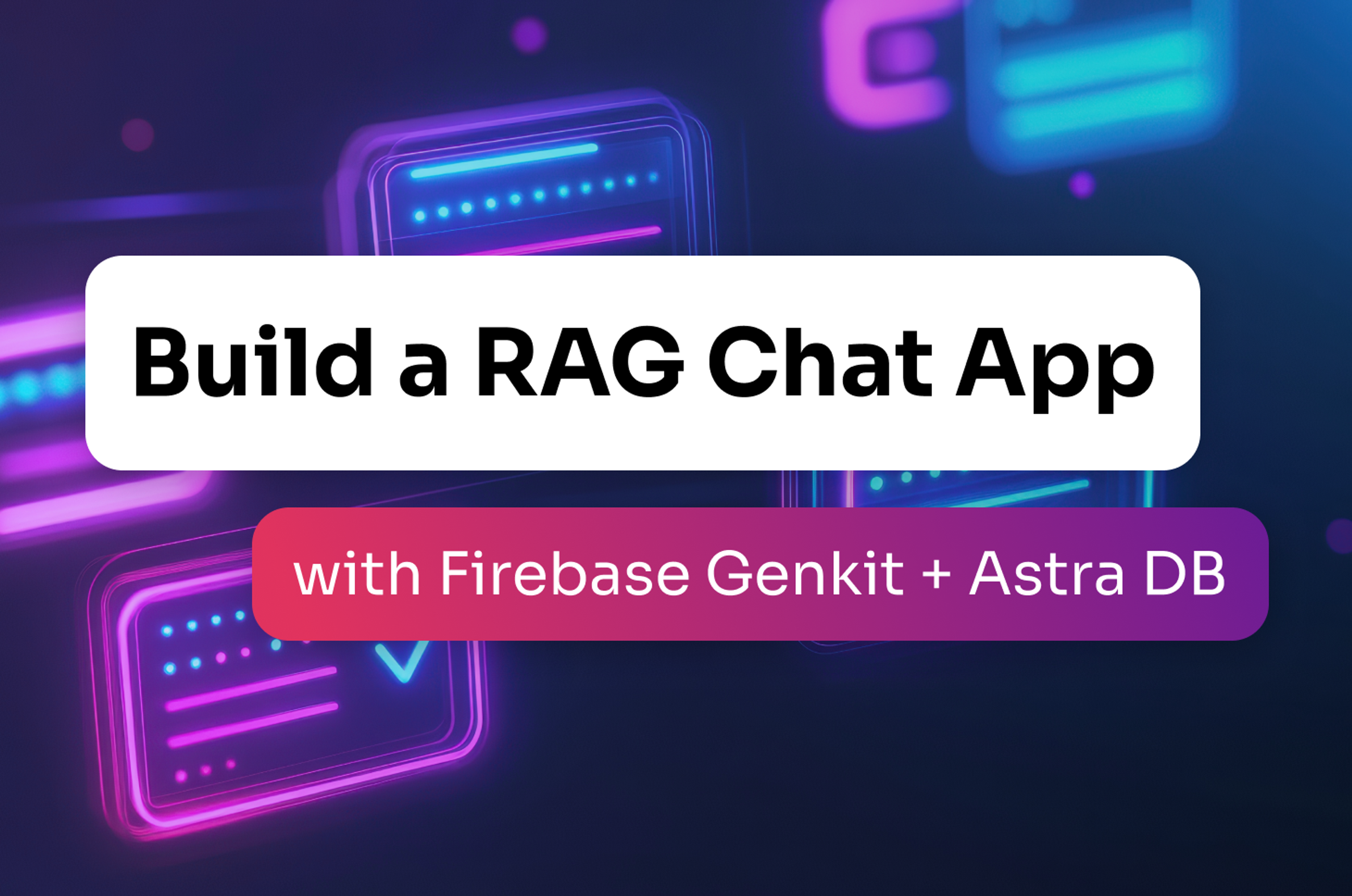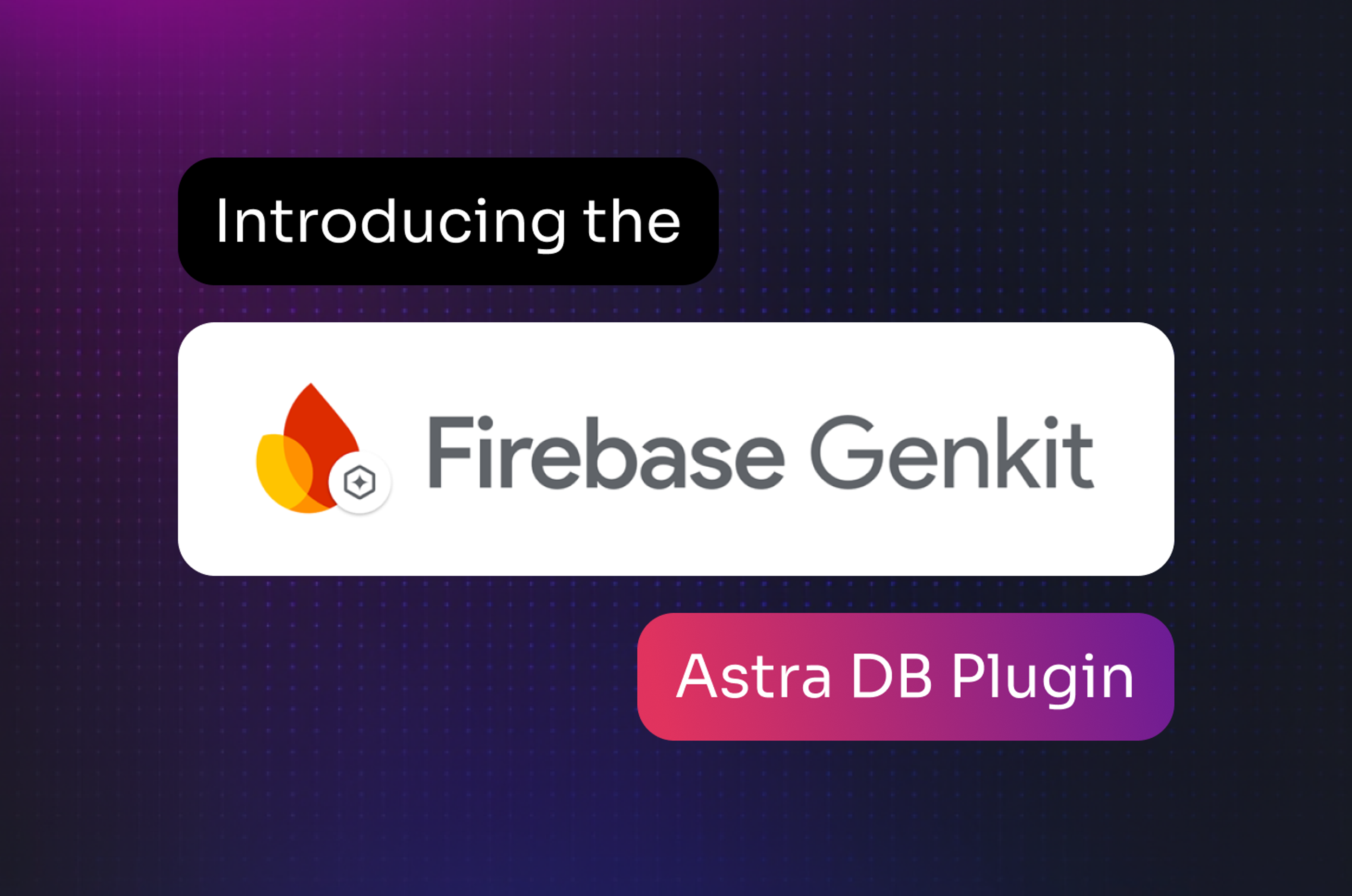AI has the potential to transform many industries, but retail and e-commerce might be one of the most obvious places for revolutionary, AI-driven advances — and the impacts are already being felt.
Think about the evolution from rule-based, manual systems that have long served retail customers with product recommendations (for example, “if a customer buys Product A, recommend Product B”). Modern AI, however, leverages machine learning to analyze large data sets in real-time and opens up a whole new world of highly nuanced, highly personalized applications.
In this post, we’ll take a look at the evolution of AI in retail, some use cases, and then demonstrate how quickly you can build an AI-driven shopping assistant with DataStax Langflow.
AI trends in retail
In retail and e-commerce, AI has evolved from being primarily rule-based to more sophisticated AI-driven solutions. Rule-based systems required manual setup (e.g., "if a customer buys Product A, recommend Product B"). But modern AI leverages machine learning to analyze large data sets and now provides more nuanced applications.
In the past, e-commerce recommendation systems used approaches like matching products and customer behavior (what a customer added to their cart, or products they purchased) to offer real-time suggestions. The processing was done through a time-consuming Hadoop Map/Reduce job, which could literally take days to process. But now, modern AI techniques and machine learning models have made this process faster and much more efficient.
AI is now used to improve not only the customer experience (through personalization) but also the employee experience. The automating of internal processes and improvement of customer service interactions can help to alleviate tedious tasks. This underscores a significant point:
“Automation with AI isn’t enough. It has to deliver results.”
While many companies and developers have explored AI (and generative AI in particular), only a fraction of them have successfully implemented it in production. Most companies are still in the experimentation or research phase, often struggling to find clear business value or use cases that drive meaningful results.
The struggles of AI adoption are in fact similar to the early days of cloud computing, when many companies were skeptical about moving to the cloud. Just as cloud computing became the default infrastructure over time, AI adoption is likely to follow a similar path – and there are some powerful tools, like Langflow, that are helping to simplify building AI applications for developers.
Building an AI shopping assistant
Here, we’ll walk through using Langflow to build a simple, AI shopping assistant. Langflow is a GUI tool that sits on top of the LangChain library, used for building AI applications. For this example, we’ll create a new project in Langflow using the “Vector Store RAG” template. This produces two flows: A data loading flow, and a chat flow.

Figure 1 - The data loading flow
The data loading flow is built by specifying a product data file (CSV), adjusting the chunk overlap down to 100, and configuring the Astra DB vector store component (figure 2) to specify the collection name, Astra DB token, and existing database. The OpenAI Embeddings component (Figure 3) should not need to be adjusted, as the default “text-embedding-3-small” model should be fine for this project.
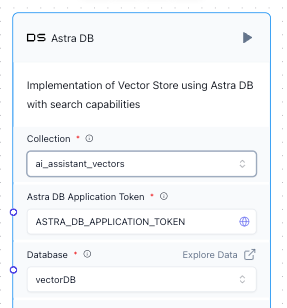
Figure 2 - Langflow’s Astra DB vector store component. This image also shows the collection name.
For the chat flow, the Chat Input component should be given a simple seed question similar to “Can you help me find a purple shirt?” The Astra DB vector store component (again) should be configured identically to Figure 1. The OpenAI Embeddings and OpenAI components should both be kept at their default settings (Figure 2), using the “text-embedding-3-small” and “gpt-4o” models, respectively.

Figure 3 - The OpenAI and OpenAI Embeddings components. The default models are fine for this example.
The prompt component requires some guardrails, or rules designed to keep the chat flow on-task and using the local dataset for context. These three rules should suffice:
- You're a personal shopping assistant for the Astra Apparel store.
- Shoppers will ask you to help them find certain products.
- You’re limited to the provided product information for Astra Apparel’s products, and you may not use data from any other source.
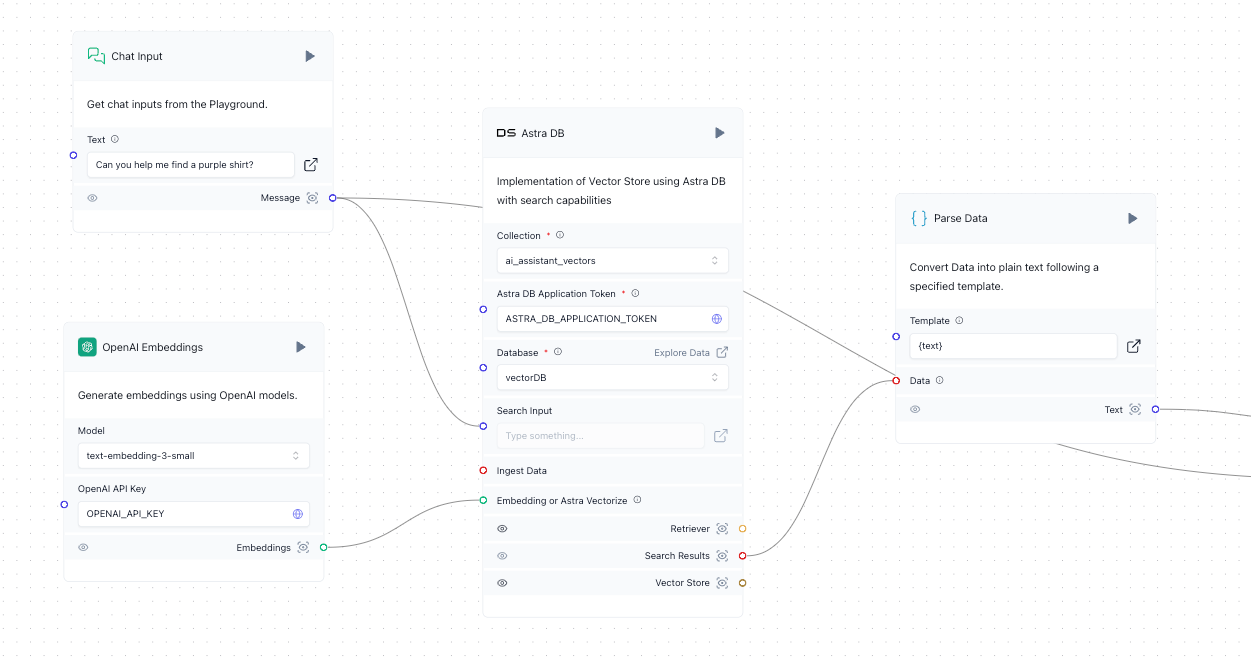 Figure 4 - The chat flow ...
Figure 4 - The chat flow ...
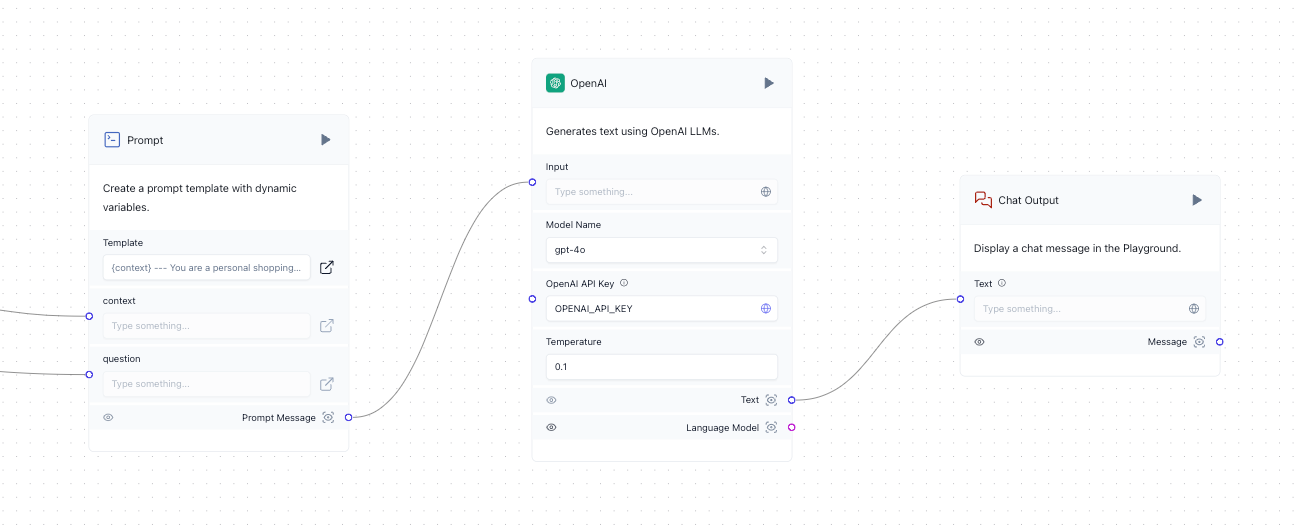
Figure 5 - ... the chat flow continued
After clicking on the “Playground” option, our shopping assistant should be complete and interactive. Of course, it could also be extended to collaborate with other services or even a front-end application. This can be configured to work with the restful API endpoint of the specific Langflow project. As such, the preceding steps can be followed to build a conversational shopping assistant.
Wrapping up
Use cases like personalization, recommendations, automation, and optimization are key drivers for AI in the retail space. That being said, GenAI adoption is still very much in the early stages, with many teams still experimenting to see what they can achieve with it.
DataStax Langflow should be noted as an easy-to-use tool that can be used to quickly prototype a functional Gen AI application. This implementation can also be tuned using different prompt guidelines, which can help tailor the responses toward its user audience.
Essentially, AI is an incredibly powerful tool that is evolving rapidly, especially in sectors like retail and e-commerce. However, successful adoption requires thoughtful implementation, clear use cases, and human oversight. As AI continues to develop, its role will likely become even more central to how businesses operate, driving better customer experiences, increasing efficiency, and improving internal processes.
Watch a replay of the livestream, “How to Build an AI Chatbot for Retail, “ presented by the authors, and learn more about Langflow.




